Text
Week 10: The Effect of Live Video Game Streaming Within The Public Sphere
A gaming community is a common sector within the games industry, those who identify themselves as a gamer are more accepted within this community than those who casually game. This idea, therefore, suggests the importance digital citizens within the gaming community have on the public sphere as a whole in media. A gaming community is similar to any social community online, where like-minded people gather together in an online forum space bonded by skills, talent and overall, the love for video games. It is this that affects the video game live streaming industry, in both a positive and a negative connotation.
Live game streaming platforms are becoming incredibly popular, especially with an increase in internet bandwidth and a rise in the development of new web services, somewhat due to the pandemic. This creates the opportunity for any online user to stream whatever they like for other consumers to engage with, furthermore suggesting the idea that live streaming is constantly changing and impacting video gaming (Smith 2013).
The creation and development of live streaming services allow for an online gaming community to be formed within the public sphere. This benefits digital citizens within the sphere as it allows them to bond with others in the gaming world. Studies have shown that there has been not only a decrease in depression and loneliness rates, socialising through video games has increased the overall motivation of those to maintain social connections whilst continuing to be part of an online community (Bowman 2022). Thus, resulting in a positive influence the public sphere has over the video gaming service industry.
Video streaming allows gamers to individually have control over the way in which they play and watch live streams with other users, this can either benefit or impact the experience of live streaming. It is this idea that can negatively affect one’s interaction with live streaming. Online harassment, trolling, violent language, and inappropriate behaviour are all common occurrences within the community that therefore contribute to the negative effects an online community can create (Ramirez 2022).
With a global audience, live streaming allows gamers from all around the world to join together through their passion for gaming, thus creating a sphere that is widely recognised within society. This group of individual digital citizens are one of the most well established and well-respected communities online due to their overall successful relationships with each other. In recent years the expansion of this community has resulted in an increase in-group members, the rise of esports has also contributed to the growth in the online community (Taylor 2018). Overall, the live video streaming community is a successful community-based group within the public sector.

References:
Bowman, N., Rieger, D. & Lin, T. 2022. ‘Social Video Gaming and Well-Being’ Current Opinion in Psychology. [online] Available at <https://www.sciencedirect.com/science/article/pii/S2352250X22000264?casa_token=ZKd7teaup1cAAAAA:oXZuJ5Y_LIZklcsij7nw74BYoQydEZkoO5LR5B8tV24y0EYQmaTKIbc0vYdCvHyyaPtJJ_P1kxN2#! >
Ramirez, L. 2022. ‘Exploring the Connection Between Playing Video Games and Watching Video Game Streaming: Relationships With Potential Problematic Uses’ Computers in Human Behavior. [online] Available at
< https://www.sciencedirect.com/science/article/pii/S0747563221004532 >
Smith, T., Obrist, M. & Wright, P. 2013. ‘Live-streaming changes the (video) game’. [online] Available at
< https://dl.acm.org/doi/pdf/10.1145/2465958.2465971 >
Taylor, T. 2018. ‘Twitch and the Rise of Game Live Streaming’ Watch Me Play. [online] Available at < https://www.jstor.org/stable/j.ctvc77jqw >
0 notes
Text
Week 9: Instagram filters - The Negative Effects Filters Have On Online Appearance
Instagram and other social media platforms beauty filters are becoming more commonly used online as their technology is constantly changing and advancing. Originally the 2015 Snap Chat filters were revolutionary, people were going crazy over the puppy dog face filter and the flower crown filter, however, this technology has rapidly changed since then. Social media technology is expanding the market for beauty filters, particularly Instagram filters and these filters are not as harmless as they seem, in fact, they cause a great deal of negative discussion within the online space.

Social media beauty filters are used to enhance consumers' appearance as their intended use is to emphasise the visual aesthetic effect of images, however, with the rise of social media influencers on Instagram, filters are now used for users to meet the beauty standard expectations in digital society. This technology is perceived to ‘mimic’ model photos seen in magazines with the photos users take in their own houses in order to appear as attractive and photographic as said model (Rettberg 2014). These filters, therefore, suggest the idea that within an online community space, such as Instagram, consumers need to ultimately change themselves in order to fit in on social media platforms.
These filters are teaching young consumers from early on in their life that they need to alter themselves online in order to appear ‘beautiful’ and ‘attractive’, these harmless filters are not just adding sunglasses to one’s image, in fact, they are changing their face shape and even skin tone entirely. It is because of this that Instagram filters can be seen as negative, especially on consumers' mental health and body image, as they are posing questions for ‘ideal standards’ within society, that realistically doesn’t need to be posed in the first place as society aims to move towards are more inclusively and accepting world online.
Digital editing tools are now more accessible online than ever before with built-in technology on platforms that allows consumers to adjust visual elements on a photo or video, contrast, brightness, highlights, and colouring (Drenten 2018). It is this technology that therefore results in an increase in body medication online as it demonstrates the effortless and easily available tools that consumers have access to in order to ‘edit’ and ‘fix’ their images. The increase of celebrities and micro-celebrities on Instagram who not only use filters but who face-tune, photoshop and edit their photos is therefore sending the message to all online consumers that they need to edit their images and videos online in order to appear a certain way, this being what is considered ‘beautiful’ or ‘trendy’ at the given time (Vendemia 2018).
Instagram filters are supposed to be fun and allow consumers to play around with harmlessly editing their images to post on social media, however, the technology behind these filters that alter users’ appearance results in the negative ideology of filters. It is these wide range of easily accessible filters and tools on various networks and platforms that limit the harmful aspect of editing photos and increase the ambient form of editing images that normalised and enhances beauty standing within social media ecologies (Lavrence & Cambre 2020).
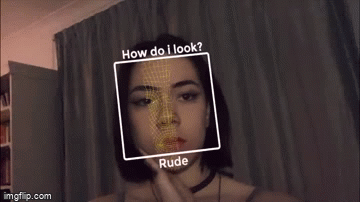
References:
Drenten, J., Gurrieri, L. & Tyler, M. 2018. ‘Sexualized Labour in Digital Culture: Instagram Influencers, Porn Chic and The Monetization of Attention’ Gender Work and Organisation. [online] Available at
< https://onlinelibrary.wiley.com/doi/abs/10.1111/gwao.12354 >
Lavrence, C. & Cambre, C. 2020. ‘“Do I Look Like My Selfie?”: Filters and the Digital-Forensic Gaze’ Social Media and Society. [online] Available at
< https://journals.sagepub.com/doi/full/10.1177/2056305120955182 >
Rettberg, J. 2014. 'Filtered Reality'. Seeing Ourselves Through Technology: How We Use Selfies, Blogs and Wearable Devices to See and Shape Ourselves. [online] Available at
< https://doi.org/10.1057/9781137476661_2 >
Vendemia, M. & DeAndrea. 2018. ‘The Effects of Viewing Thin, Sexualized Selfies on Instagram: Investigating the Role of Image Source and Awareness of Photo Editing Practices’ Body Image. [online] Available at
< https://www.sciencedirect.com/science/article/pii/S1740144518300755 >
0 notes
Text
Week 8: The Impacts Social Media Plays On Body Modification
The increase in social media influencers results in the rise of body modification online, this not only be subjected to those using beauty apps to alter one’s appearance but can also be apparent in micro-celebrity culture – pornification, aesthetic labour, and sexualised femininity and masculinity culture which can ultimately lead to Body Dysmorphic Disorder (BDD) and other mental health issues (Mavroudis 2022).
Online body modification can be explored in a way like never before, micro-celebrities and influencers are using various platforms and tools to alter their appearance online, whether this is through face-tunning or editing one’s body to make themselves appear a certain way. This idea has now become ‘normalised’ within western society (Tyler and Quek 2016), as it suggests that online users are engaging with as well as participating in online body modification without realisation.
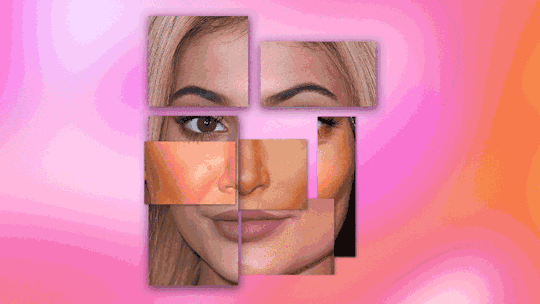
Body modification and the exploitation editing of images online can be viewed as pornification as influencers are everyday social media users posting highly edited exploitive photos of their bodies online. This idea is visible amongst the Kardashians and Jenners who regularly post sexualised content, despite this creating unhealthy thoughts around body image, whilst contributing to pornification and microcelebrity culture it is also highlighting the significance of being comfortable in one’s skin whilst exploring the idea of femininity on social media (Spargo 2020). The overall idea of pornification has led to the visibility of sexual representation in mainstream media and culture (Attwood 2010).
Tana Mongeau is a notorious image editor that contributes significantly to body modifications online as well as the idea of pornification due to the type of photos posted. Despite Mongeau and other influencers being open and honest about their photoshopping of photos, this still contributes to the negative effects edited photos have on young consumers online who look up to these influencers as role models. Although being transparent about editing is a commendable thing online in comparison to those who lie and aren’t honest about their images being real or fake, this idea of body modification has a severe impact on mental health and body image issues which can ultimately result in BDD. This, therefore, suggests the negative effect photoshopping and editing have on society in particular the internalisation of beauty standards and body image concerns (Pham 2018).
Online body modification also extends to people modifying their bodies to fit in with online trends or to appear to look like celebrities or micro-celebrities online. This can be explored with teenage girls piercing parts of the body which therefore is a form of body modification. In 2020, TikTok of girls getting their nipples pierced was going viral, this quickly became a trend where people would film the benefits of getting their nipples pierced on would vlog the experience. Despite this being a harmless trend at first, the viral sensation of body modification can be attributed to arise many ethical and behaviour questions. However, it is online forum discussions that generate conversation and allow users to be more confident in their body and appearance as it is becoming normalised within society (Rome 2022).

References:
Attwood, F. 2010. ‘The Sexualisation of Culture’ Mainstreaming Sex: The Sexualisation of Western Culture. [online] Available at <https://books.google.co.uk/books?hl=en&lr=&id=3xKJDwAAQBAJ&oi=fnd&pg=PT10&ots=9GYkVO25X6&sig=cVqKEHQQtx5SiEJ36fEm7p1U-Tc#v=onepage&q&f=false >
Pham, T. 2018. ‘Why Can 't I Look Like Her? The Impact of Photoshop on Female Adolescents' Internalization of Beauty Ideals and Body-Related Concerns’. Dickson Scholar. [online] Available at
< https://scholar.dickinson.edu/cgi/viewcontent.cgi?article=1058&context=student_work >
Rome, A. 2022. ‘Taking off the Blindfold, The Perils of Pornification and Sexual abjectification.’ The Routledge Companion to Marketing and Feminism. PP. 207 – 214. [online] Available at <https://books.google.com.au/books?id=mhdYEAAAQBAJ&printsec=frontcover#v=onepage&q&f=false >
Spargo, T. 2020. ‘Kim Kardashian’s Ass: Thoughts on Sexual Politics’. Albuquerque History Magazine. [online] Available at
< https://periodicos.ufms.br/index.php/AlbRHis/article/view/12358/10225 >
Tyler, M. & Quek, K. 2016. ‘Conceptualizing pornographisation’. Media and Society. [online] Available at
< https://journals.sagepub.com/doi/pdf/10.1177/2374623816643281 >
0 notes
Text
Week 7: Social Media Governance and its Relationship to Online Conflict
Social media governance is the practice of implementing policy and regulation to reduce conflict online (Flew 2015). In relation to digital citizenship, social media governance is important in the understanding of the regulations put into place by networks in order to control social media platforms on the internet. Social media governance can therefore contribute to the idea of minimising online harassment and conflict which may be evident in many digital communities and groups online.
An issue with social media and governance is the employment of technologies used to filter conflict whilst protecting the safety of online users. From this, companies can address this issue by creating a series of policies that directly govern the information uploaded on live platforms (DeNardis 2015).
Community-based social media platforms establish regulations with the intention of protecting online community spaces whilst controlling the administration and moderators of particular groups online. Facebook groups can refer to this idea, through the way in which group administrators are monitored, which is ultimately influenced by societal factors. Facebook doesn’t govern through the law, however, through social interactions online, including ‘social, political, cultural and economic consequences’ (Schwarz 2019). Furthermore, this suggests that Facebook, and similarly other social media networks govern and regular groups and content through external factors that may influence consumers within society. Due to this, the public interest becomes the main focus when creating and administrating these groups in order to protect the members within the community, whilst also protecting the platforms themselves through legislation.
Social media governance can also contribute to the online harassment that occurs within the digital citizen public sphere. The regulation of policies and laws on social media platforms is designed to limit the amount of conflict through governing users’ online behaviour, however, the lack of governing online can ultimately lead to an increase in online harassment (Pater 2016). Policies can be powerful in limiting the amount of conflict that occurs online through regular monitoring and having laws in place that minimises online harassment.
Overall, the relationship between social media governance and online conflict and harassment can attribute to the success of media platforms or the ultimate downfall of these networks. This is due to the idea that through governing there is a sense of control within the online community space, however, if this isn’t regulated properly this can result in online conflict and even harassment.

References:
DeNardis, L. & Hackl, A. 2015. ‘Internet governance by social media platforms’ Telecommunications Policy. [online] Available at
< https://www.sciencedirect.com/science/article/pii/S0308596115000592 >
Flew, T. 2015. Social Media Governance’ Social Media and Society. [online] Available at
< https://journals.sagepub.com/doi/full/10.1177/2056305115578136 >
Napoli, P. 2015. ‘Social media and the public interest: Governance of news platforms in the realm of individual and algorithmic gatekeepers’ Telecommunications Policy. [online] Available at <https://www.sciencedirect.com/science/article/pii/S030859611400192X?casa_token=Kz62a8gK1oAAAAAA:-DkvKyUGlfJXbzdlCFuQUCvvFYDvCTKhOKgKHIVTcFZoYXpsZUlx2sZ-SkdiaIK0IeuvC9h7_YUm >
Pater, J., Kim, M., Mynatt, E. & Fiesler, C. 2016. ‘Characterizations of Online Harassment: Comparing Policies Across Social Media Platforms’ [online] Available at
< https://dl.acm.org/doi/pdf/10.1145/2957276.2957297 >
Schwarz, O. 2019. ‘Facebook Rules: Structures of Governance in Digital Capitalism and the Control of Generalized Social Capital’ Theory, Culture, and Society. [online] Available at
< https://journals.sagepub.com/doi/full/10.1177/0263276419826249 >
0 notes
Text
Week 6: Social Media Influencing Fast Fashion
Social media platforms are driving the influence of online consumers to purchase items considered fast fashion. Companies such as Shein, Cotton On, H&M, Zara, and Glassons (Hayes 2021), are all fast fashion enterprises that young consumers are regularly exposed to online therefore promoting fast fashion through social media. Whether this is through influencers' exposure and paid partnerships with brands, or hauls on TikTok fast fashion is further enriched online due to a cultural aggregations in trends via a virtual community (Adi 2018).

With an increase in demand for fashion, the fast fashion industry has grown 9.7% per year over the last five years around the globe (Michaela 2015). This suggests the impact that social media has contributed to the increase of fast fashion with a growth of online consumers presence, especially with the rise of TikTok and the impact this has had on young demographic users. TikTok and Instagram are the main social media networks that demonstrate a growth in fast fashion. Instagram influencers such as Australian SophaDopha and Olivia and Ashley Mescia are considered to promote fast fashion through their partnerships with fast fashion brands, major companies include White Fox, Beginning Boutique, Glasson’s and Cotton On. Despite the fact these influencers also wear slow fashion pieces, the majority of their followers tend to purchase fast fashion items as they are the cheaper option. These influencers hold great power on social media and are a result of micro-trends which also affects the rise in fast fashion brands.
Fast fashion results in a change of trends quickly and with social media being a platform where influencers regularly post photos of themselves in different outfits, therefore, results in micro-trends becoming apparent which overall leads to an increase in fast. It is this regular occurring cycle that is the downfall of fast fashion that contributes to mass consumption resulting in waste and landfills and very little of consumers participating in micro-trends know the harm their outfits are causing to the environment (Ting 2021), and many of those that do understand the impact fast fashion has on the planet is ignoring the problem to keep up to date with the latest trends.
Micro-trends and viral videos contribute to fast fashion in a social media dominant world, the increase in fashion trends online, therefore, results in the high demand for cheap, poorly made clothing items that are considered to be ‘in-style’ for a few weeks before society decided it is now ‘out of fashion’. This overall impacts fast fashion and the rise of fast fashion trends through social media influencing what items of clothing are next blue Glasson’s corset.
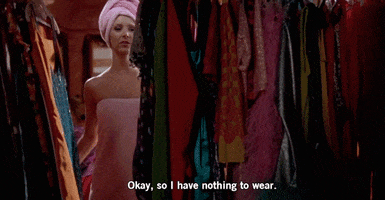
References:
Adi, A. 2018. ‘#Sustainability on Twitter: Loose Ties and Green-Washing CSR’ Corporate Responsibility and Digital Communities. [online] Available at <https://www.researchgate.net/publication/321343155_Sustainability_on_Twitter_Loose_Ties_and_Green-Washing_CSR >
Geiger, S. & Keller, J. 2018. ‘Shopping for Clothes and Sensitivity to the Suffering of Others: The Role of Compassion and Values in Sustainable Fashion Consumption, Environment and Behavior’ Environment and Behavior. [online] Available at <https://www.researchgate.net/publication/319941479_Shopping_for_Clothes_and_Sensitivity_to_the_Suffering_of_Others_The_Role_of_Compassion_and_Values_in_Sustainable_Fashion_Consumption >
Hayes, A. 2021. ‘Fast Fashion’ Investopedia. [online] Available at
< https://www.investopedia.com/terms/f/fast-fashion.asp#toc-what-is-fast-fashion >
Michaela, E. & Lavie, S. 2015. ‘Fashion Conscious Consumers, Fast Fashion and the Impact of Social Media on Purchase Intention’ Academic Journal of Interdisciplinary Studies. [online] Available at < https://www.mcser.org/journal/index.php/ajis/article/view/8365/8029 >
Ting, T. & Stagner, J. 2021. ‘Fast fashion - wearing out the planet’ International Journal of Environmental Studies. [online] Available at <https://www.tandfonline.com/doi/full/10.1080/00207233.2021.1987048?casa_token=MPlUXzuIhMAAAAAA%3Au7myGz7VshHlXXrGp9H2AWSsVrhy085nIS9Oslx-GCUxuTx8V1yGIJfrA_v3arqZCllHuYSnqxcLHNA >
1 note
·
View note
Text
Week 5: Digital Citizenship and Political Engagement
The rise of social media and networks online has enabled digital citizenship in developing through using digital technological information to engage in social, political, and government issues. Digital citizenship is the participation of a public deliberation within the public sphere online that allows everyday citizens to become presented with different societal norms and discussions that overall benefits society (Vromen 2017).
Digital citizenship is presented in politics, especially through advocacy campaigns. This was particularly demonstrated in the 2015 U.S. election between Donald Trump and Hilary Clinton. In relation to Cambridge Analytica, digital citizenship was apparent in the process of the election through the idea of social media and media platforms enabling the further engagement and understanding of the public, becoming aware of not only what the candidates were presenting online but further into who the public were actually voting for (Nelimarkka 2020). The public forum online displayed ideas of exploitation in the process of the campaign election, suggesting the implications as well as the benefits digital citizenship has in the political voting process (Strandberg 2014).
The nature of the candidates’ interactions via social media enabled the publics across the globe to become more aware of the potential candidates who will ultimately lead their county (Nelimarkka 2020). This idea suggests how social media can either boost one’s popularity or become the means to one’s downfall, specifically focusing on Donald Trump in relation to his Twitter account in the late years. The digital citizenship of political engagement is evident in demonstrating how online usage contributes to public engagement online which therefore can benefit politicians by increasing their supporters based on their online presence as social media creates a way to establish a direct communication to possible target publics (Emmer 2018). Overall, social media has a huge role in allowing the public to understand the importance of not only their political candidates, but the influence digital citizenship has in developing a strong understanding within the public sphere.
Social media is a more recent vehicle for activism and other public displays in society that therefore allows for politics to play an important part in digital citizenship, especially through engaging political participation (Inglehart 1997). The influence social media had over the political campaigns, as well as elections, has become apparent in recent years, and this idea begins to grow with the expansion of social media platforms and politically influential figures now relying on social media as a source to further engage with the public and their intentions moving forward in society.

References:
Emmer, M. & Kunst, M. 2018. ‘Digital Citizenship – The Impacts of ICTs on Citizens’ Political Communication’ International Journal of Communication. [online] available at < https://ijoc.org/index.php/ijoc/article/view/7721/2354 >
Nelimarkka, M. & Laaksonen, S. 2020 ‘Platformed Interactions: How Social Media Platforms Relate to Candidate– Constituent Interaction During Finnish 2015 Election Campaigning’ Social Media and Society. [online] available at <https://www.researchgate.net/publication/340401647_Platformed_Interactions_How_Social_Media_Platforms_Relate_to_Candidate-Constituent_Interaction_During_Finnish_2015_Election_Campaigning >
Strandberg, K. 2014. ‘Designing for democracy? – An experimental study comparing the outcomes of citizen discussions in online forums with those of online discussions in a forum designed according to deliberative principles’ European Political Science Review. [online] available at
< https://www.cambridge.org/core/journals/european-political-science-review/article/abs/designing-for-democracy-an-experimental-study-comparing-the-outcomes-of-citizen-discussions-in-online-forums-with-those-of-online-discussions-in-a-forum-designed-according-to-deliberative-principles/29C54B84B4A5195846D18F10EF75D98E >
Vromen, A. 2017. ‘Digital Citizenship and Political Engagement’ Interest Groups, Advocacy and Democracy Series. [online] available at
< https://link.springer.com/chapter/10.1057/978-1-137-48865-7_2 >
0 notes
Text
Week 4: Social Media Enhancing Reality TV.
Social media platforms can be perceived as enhancing reality television by the way in which it presents certain reality stars on tv as well as how social media generates conversation in relation to reality tv.
In current day reality tv, most stars and people who take part in reality television usually have an established social media platform, whether this is Instagram or TikTok. ‘Trashy’ dating programs such as Love Island and the Bachelor franchise typically only enlist those with some form of a successful social media platform in order to receive a higher engagement and viewership as there is a high likelihood that those consumers who already follow these ‘stars’ will then consume the reality show they are presented in.
Social media enhances the viewership of reality tv as it allows a public sphere discussion to take place online, generating a ‘buzz’ of the television show on multiple platforms whilst targeting a larger audience. Social media ultimately advances discussion and hype of reality tv amongst the contemporary television spectre, this being an increase of viewership and posting related content online in comparison to other television series where audiences are not active.
Through social media reality tv storylines and conversations of topics can be mediated in actively integrating content online on various platforms that generate conversation amongst the media ecosystem in relation to these reality stars in a variety of different online communities, whether these are fandoms, reality tv communities, or outsider consumers who are regularly engaging with reality tv content as it is often presented on their social media algorithms (Stefanone 2009).
Reality television creates an environment on social media that enables passive and active audiences to keep up to date in the drama and follow along whilst being able to contribute in a public sphere, especially through the use of hashtags and voting that then can be displayed during the live television program. Overall reality television programming ultimately is used to present values and behaviours that are related to self-disclosure as well as the development of social media platforms that enable audience members to be active in discussion online.
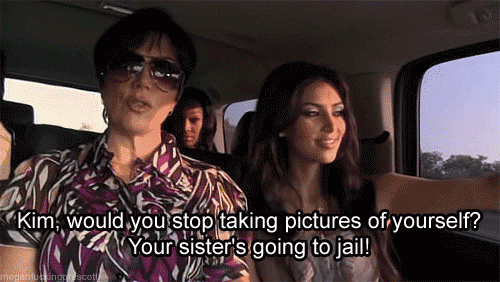
References:
Beck, D., Hellmueller, L. & Aeschbacher, N. 2012. ‘Factual Entertainment and Reality TV’ Communication Research Trends. [online] available at
< http://cscc.scu.edu/trends/v31/CRT_v31_n2_June_2012.pdf >
L’Horiy, X. 2019. ‘Love Island, Social Media, and Sousveillance: New Pathways of Challenging Realism in Reality TV’ Frontiers in Sociology. [online] available at
< https://www.frontiersin.org/articles/10.3389/fsoc.2019.00059/full >
Stefanone, A. 2009. ‘The Relationship between Traditional Mass Media and “Social Media”: Reality Television as a Model for Social Network Site Behavior’ Journals of Broadcasting and Electronic Media. [online] available at
< https://www.tandfonline.com/doi/full/10.1080/08838151.2010.498851 >
0 notes
Text
Week 3: Anonymity on Tumblr
Tumblr, although not really seen to be used as much in current society, still plays a huge part in the social dimension in 2022. Tumblr is ranked 10 in social media sites used in Australia, which is ranked higher than TikTok and Reddit (Social Media News February 2022). But why you might ask. Tumblr is a successful social media platform as it enables multiple elements that other social media networks don’t, the main factor being anonymity and others including tagging and hashtagging (Ricardo 2014).

Tumblr ultimately creates a space where users online do not have to engage with regular identifications that link profiles to certain people, this is relevant with real name usernames as well as face profile pictures. This allows Tumblr users to practice anonymity online which ultimately delivers a safe space and community to all as it prioritises anonymous personal expressions online which creates further freedom and expression on social media in comparison to other platforms (Pitre 2018).
Most social media platforms in the current day are used to hyper-individuate consumers which the majority of social media consumers might be drawn to in relation to their online presence, however, this isn’t the case for all, especially those part of marginalised communities, including the LGBTQ+ community.
Those part of minority groups flocks to Tumblr as it is a known platform in creating safe spaces online as it allows users to be whoever they want to be online whilst there is a limit in trolling and cyberbullying which therefore allows consumers to be themselves online without having to restrict their privacy online. Through Tumblr users are able to revel in anonymity, post whatever without repercussions of people knowing it’s you and without it being linked back to you (Reeve 2016), despite this being viewed as a negative idea online due to it creating many problems on social media, Tumblr is different in the way in which it presents or the lack thereof, trolls.
In a “culture of increasing individualisation where people want to have their story told” (Wiles 2008), Tumblr goes against this societal norm online by persuading users to practice anonymity online and not post about themselves, however, contribute to their interests in multiple fandoms, political engagement and social views in different online communities with other likeminded people.
In doing this Tumblr also tries to limit trolling and cyberbullying with anonymity. Gender-based and sexual harassment are the main contributors of cyberbullying and through anonymity, Tumblr tries to reduce trolling online by generating a safe space in an online forum that minimises the likelihood of trolling as Tumblr is presented in a way that explores young people's exhibitionism in their own way (Ashley 2019). Thus, making Tumblr a favourable platform for those to engage with regularly as this, therefore, allows users online to hide behind anonymity whilst creating a safe space in doing so.

References:
Pitre, J. 2018. ‘Being queer on Tumblr: Privacy and anonymity in the age of social media’ Archer. [online] Available at <https://archermagazine.com.au/2018/10/queer-tumblr-privacy-anonymity-age-social-media/ >
Ricardo, D. 2014. ‘The advantages of having a Tumblr account’, Strategy Plus. [online] Available at < https://www.strategy-plus.net/articles/tumblr/ >
Reeve, E. 2016. ‘The Secret Life of Tumblr Teens’, New Republic. [online] Available at
< https://newrepublic.com/article/129002/secret-lives-tumblr-teens >
Vex, A. 2019. ‘Tumblr porn eulogy’, Porn Studies. [online] Available at
< https://doi.org/10.1080/23268743.2019.1631560 >
0 notes
Text
This is an example post...
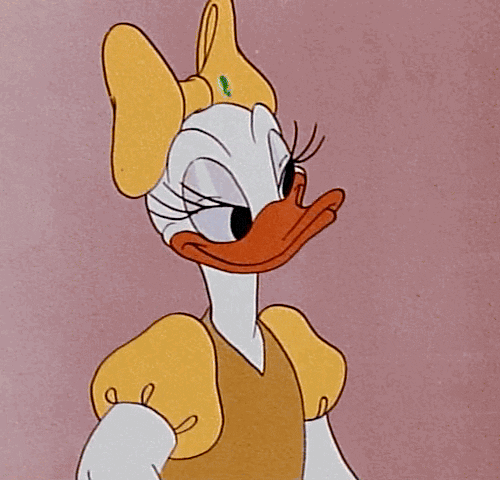
Hi, my name is Caitlin and welcome to my tumblr blogggg where I’ll be regularly posting all things digital communities, including my weekly discussion posts. Enjoy!!
1 note
·
View note